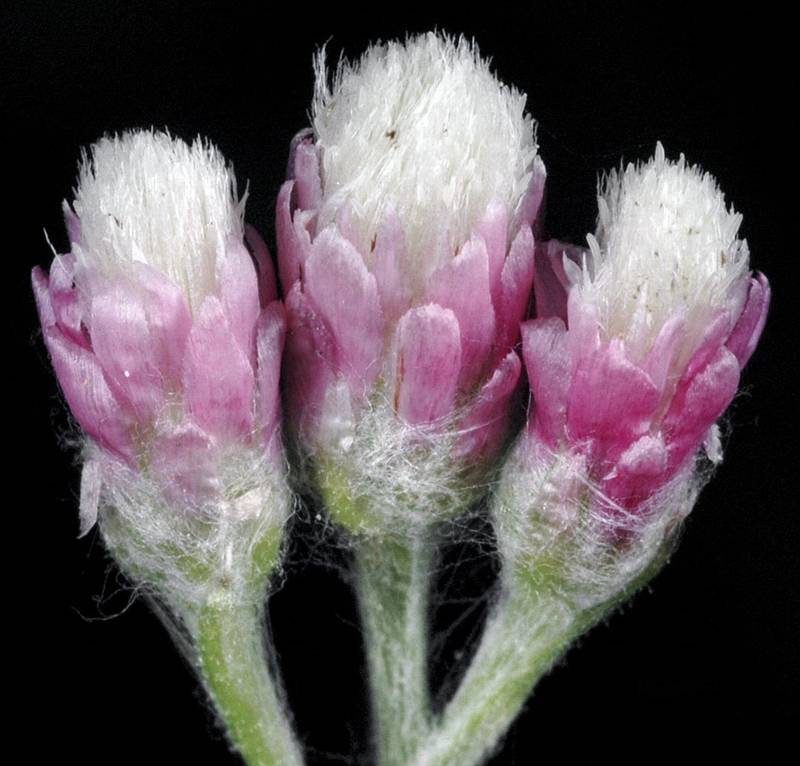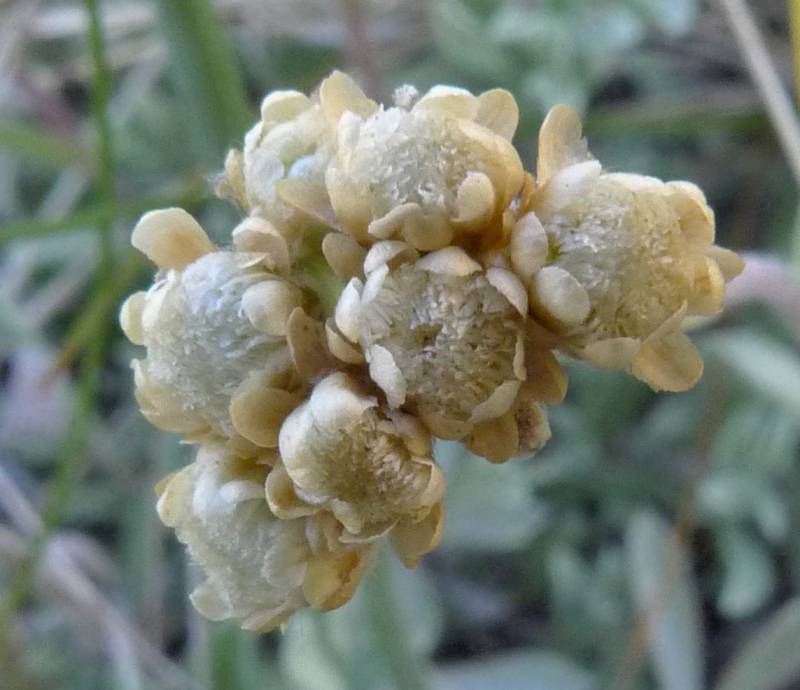Antennaria rosea
Antennaria umbrinella
brown-bract pussytoes, umber pussytoes
Leaves 1-nerved;
upper surface of the leaves covered with silvery-white hairs;
basal leaves spatulate or oblanceolate with a wedge-shaped base;
cauline leaves linear, alternate.
Basal leaves oblanceolate, up to 25 mm. long and 7 mm. wide, loosely white-woolly on both sides;
cauline leaves few and reduced.
Heads several in a sub-capitate cyme; pistillate involucres 4-10 mm. long; scarious portion of the involucre bracts white, straw-colored or light yellow.
Heads several in a compact cluster;
involucral bracts rounded at the tip, the scarious portion of the outer ones brownish to dirty greenish, the inner ones often whitish toward the tip, or sometimes all the bracts brownish; pistillate involucres 4-7 mm. high; staminate plants uncommon.
Achene.
Fruit an achene.
Antennaria rosea
Antennaria umbrinella
- Local floras:
BC,
CA,
OR,
WA
- Local Web sites:
CalFlora,
CalPhotos,
Flora NW,
PNW Herbaria,
Turner Photog.
WildflowerSearch
iNaturalist (observations)
USDA Plants Database
- LBJ Wildflower Center
- SEINet
- Plants of the World Online
- Encyclopedia of Life
- Wikipedia
- Google Image Search



